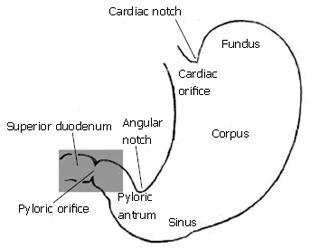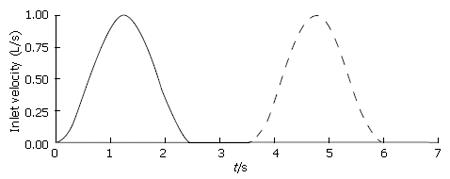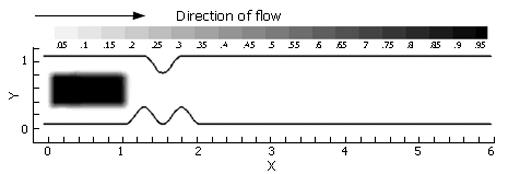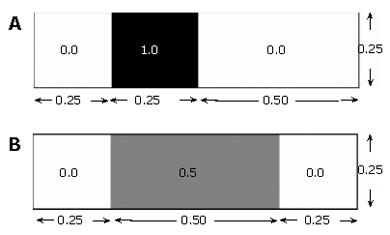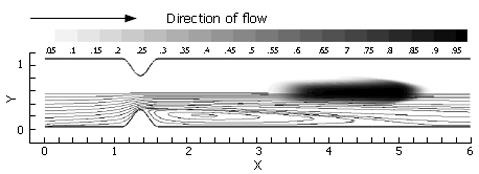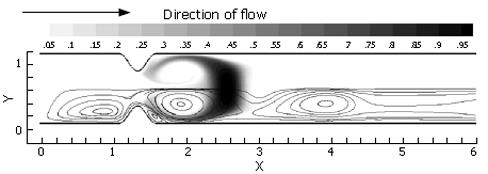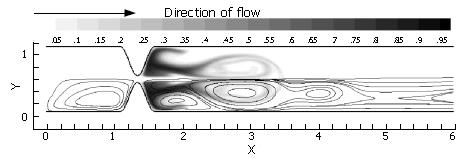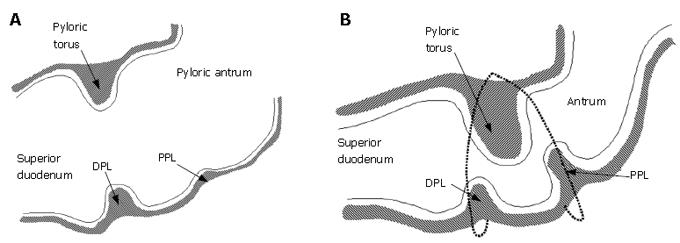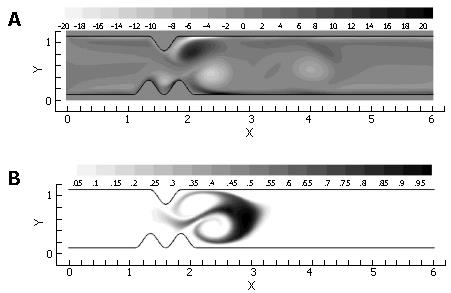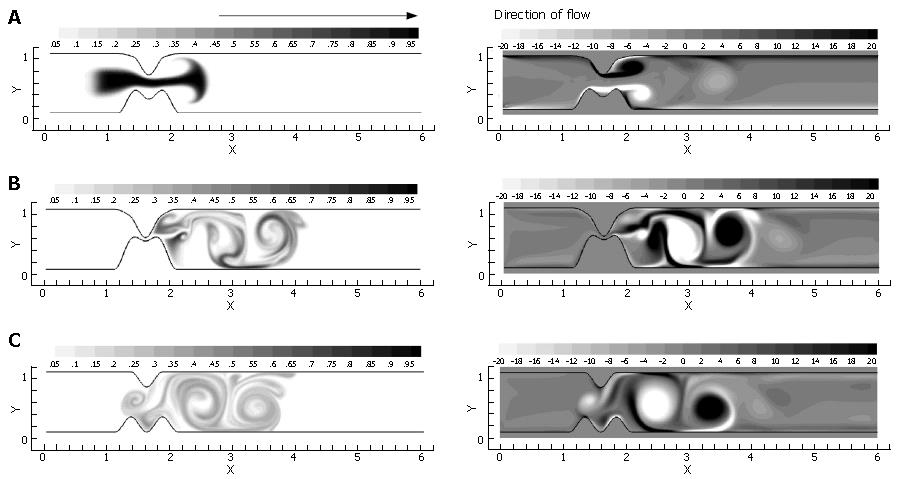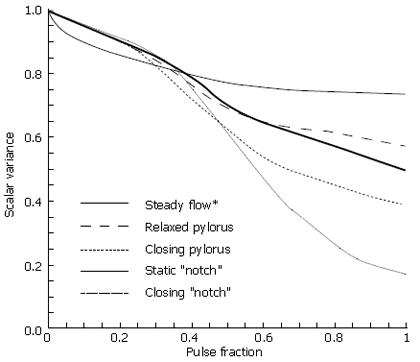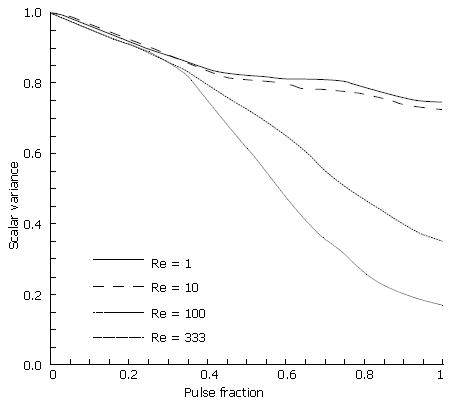Copyright
©2007 Baishideng Publishing Group Co.
World J Gastroenterol. Mar 7, 2007; 13(9): 1365-1371
Published online Mar 7, 2007. doi: 10.3748/wjg.v13.i9.1365
Published online Mar 7, 2007. doi: 10.3748/wjg.v13.i9.1365
Figure 1 The region of interest (highlighted in grey) includes gastric outlet, or antrum, pylorus, and superior duodenum.
Figure 2 Two representative channel domains used in flow calculations: (A) relaxed pylorus; (B) "notched" configuration resulting from tonicity of pyloric torus and both muscle loops.
Math 1 Math(A1).
Math 2 Math(A2).
Figure 3 Temporal variation of inlet velocity.
Math 3 Math(A3).
Figure 4 The scalar species block was initialized identically for each case evaluated.
Math 4 Math(A4).
Math 5 Math(A5).
Figure 5 Illustrative example of scalar variance calculation: (A) initial and (B) final states, each with a mean concentration of 0.
25.
Figure 6 Passage of a passive scalar marker through a relaxed pylorus under steady flow conditions, with inlet velocity set to V* = 1.
0 and Re = 333. In this image, 2.0 time units have passed, with the marked fluid exhibiting vertical compression toward and horizontal stretching along the symmetry axis in the weak jet created by the pyloric constriction. Aside from an increase in surface area due to longitudinal stretching, no mixing is seen in this case.
Figure 7 Scalar species distribution following the active phase of one inlet pulse (t = 2.
5 time units, Re = 333), illustrating vortical stretching and resultant increase in interfacial area between regions of concentration 1.0 and 0.0.
Figure 8 Scalar species passage through a narrowing pylorus (Re = 333): t = 2.
5 time units; the pyloric lumen is occluded and inlet velocity has returned to 0.0. The thin, high velocity jet affected by the narrow lumen has led to rapid growth of a strong vortex pair, which sheds and propagates downstream as the bulk flow is halted.
Figure 9 A: Relaxed pylorus; B: 2-D asymmetry is produced by tonicity of both pyloric muscle loops in the contracted state.
Figure 10 Vorticity (A) and scalar field (B) after 2.
5 time units at Re = 333. Inlet velocity has returned to 0.0 and vortices have shed from divergent surfaces distal to the lumen.
Figure 11 A temporal progression of scalar species (left) and vorticity (right) during one complete inlet pulse cycle (3.
5 time units) through the closing asymmetric pylorus: A: t = 1.25 time units, with the vortical jet becoming apparent as inlet velocity is maximized and luminal narrowing occurs; B: t = 2.5 time units. The lumen is fully closed, and the inlet velocity has returned to 0.0; C: t = 3.5 time units. The pylorus has returned to its original open state during the 1.0 time unit refractory period. Strong, stable regions of vorticity remain, entraining weaker unstable vortices and further stretching the species.
Figure 12 Scalar variance plots of each case through one complete pulse cycle; Re = 333.
Figure 13 Scalar species plots following one pulse cycle through a closing, asymmetric pylorus at four different Reynolds numbers: A: Re = 1; B: Re = 10; C: Re = 100; D: Re = 333.
Figure 14 Scalar variance of asymmetric pylorus model at four different Reynolds numbers.
- Citation: Dillard S, Krishnan S, Udaykumar H. Mechanics of flow and mixing at antroduodenal junction. World J Gastroenterol 2007; 13(9): 1365-1371
- URL: https://www.wjgnet.com/1007-9327/full/v13/i9/1365.htm
- DOI: https://dx.doi.org/10.3748/wjg.v13.i9.1365









